Previous Newsletters
|
||||
|
BOSTONTHEN & BOSTONNOW: TECHNOLOGY 2.0
January is J-term, a ‘calm before the storm’ interlude when students straggle in from Christmas vacations all over the planet to an Arctic Boston before spring semester begins in earnest in February. When we were asked to devise a meaningful three week ‘externship’ by the Harvard Graduate School of Design and the Boston Society of Architects we immediately said yes and set about attacking this challenge with our usual gusto. We’re all in favor of year round education, but, in truth - no matter how smart and talented the students are - concocting a suitable indoor exercise at the peak of flu season is not the most promising window to accomplish much of anything let alone launch a major project. Even though we are very hardcore at cultureNOW and pride ourselves at stepping up to the plate and performing miracles, we lowered our expectations. That way no matter what happened, we could be pleasantly surprised. We brag a lot in our powerpoints about how we’re harnessing the power of technology to set the standard for creating a true Museum of the Environment. With minimal prompting we wax eloquent about the possibilities of comparing places as they look today with how they were in days of yore merely by holding up your phone. And, we proudly point to one or two iconic images of say, the Seagrams Building or the TWA terminal under construction while glossing over the sad truth that the rest is still very much a work-in-progress. We don’t really think that we fool anyone into believing that there are more than a handful of historical images in our collection. It was clear that we needed to find an opportunity to beta test whether this was even doable and if so, exactly what would be involved in making it happen. So, we reached out to Peter Vanderwarker, a photographer who, together with architecture critic Bob Campbell, had written a series of articles that appeared in the Boston Globe for some 20 years exploring the changing Cityscape of Boston. We asked him to collaborate with us on making the series accessible on the iPhone and online. He was game. This became the core of our J-term project. What happened astonished even us. We were totally shocked that we had assembled a hotshot team of externs who managed to accurately and quickly get all 250 odd articles scanned, cropped, dated, retyped and posted during normal business hours. But wait, there’s more. We were even more amazed that the Fenway Alliance proposed highlighting the new Fenway Cultural District (Massachusett’s first) by adding lots of content and devising a tour. And our crack team did that too. Consequently, this month we’re back in Boston sharing the abundant fruits of our labor. We selected a Boston architect, Ann Beha, who has done many cultural buildings in the Fenway and a Boston artist, Ralph Helmick, who has a lot of commissions both in and out of the city. When we were looking at his work, we noticed that he has a sculpture in Dublin, Ohio a place we knew nothing about. Dublin doesn’t have a large public art collection, but boy do they have a committment to technology and have managed to record podcasts with almost all the artists who have pieces there. Consequently, we have added 58 new podcasts and videos from Dublin and even a tour. If you’d asked us in December about our to-do list for January we would never have imagined that it would include over 100 new podcasts, more than 300 new sites, 8 new tours and even a program. Abby Suckle, President | ||||
|
FEATURED ART COLLECTION: DUBLIN, OHIO Dublin, Ohio is a small town, really a bedroom community not too far from Columbus. In total the art collection numbers about 70 pieces split into a series of historical statues and plaques gracing many of its public spaces and more recently commissioned works. Much of the artwork was inspired by the history and culture of the area. The Simulation George S. Karra’s Workshop, commissioned for Dublin’s 2010 Bicentennial, is designed to conjure a memory of Karrer’s blacksmith shop which once stood on the project’s site in the late 1800s. A piece like Watch House recalls the original inhabitants of the area, the Hopewell/Adena tribe. There is also a speaking tube recalling one used by Dr. Eli Pinney, which was used as a link in the Underground Railroad during the mid-1800s. Even Ralph Helmick's Leatherlips (Dublin's first Art in Public Places program project) is a portrait of the Wyandot Native American Chief Leatherlips who lived in the area. Like most public art organizations, the Dublin Cultural Council is trying to make the collection accessible. Consequently, they have devised a scavenger hunt of what they call Riverboxes, semi-hidden commissioned artworks sprinkled throughout the community that are meant to be uncovered. |
||||
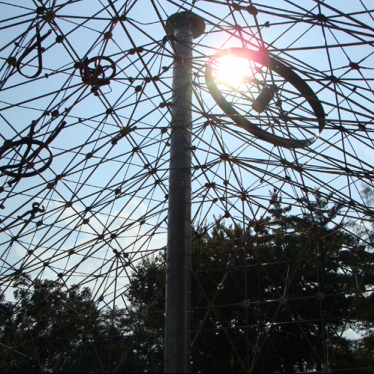
The Simulation of George S. Karra’s Workshop B. Hatcher
(2010) Photo courtesy of Dublin Arts Council |
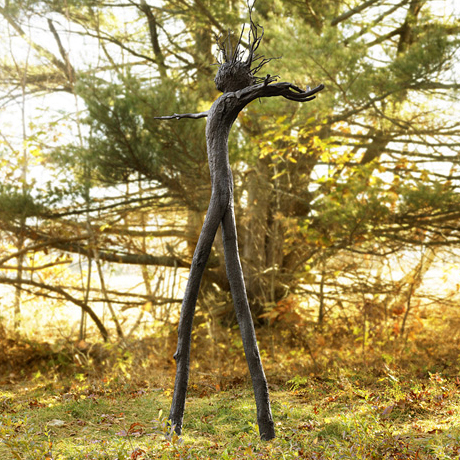
Jaunty Hornbeam (2001) Joseph Wheelwright
Photo courtesy of Dublin Arts Council |
|||
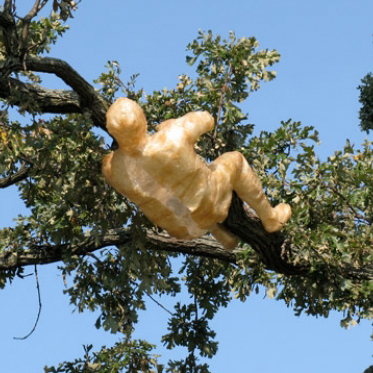
Exuvia (2008) Todd Smith
Photo courtesy of Dublin Arts Council |
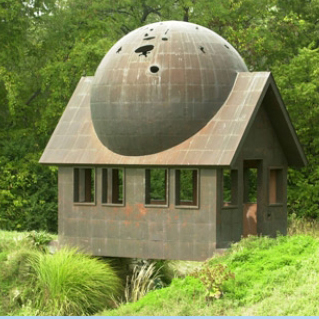
Watch House Todd Slaughter
Photo courtesy of Dublin Arts Council |
FEATURED NEW SITE: 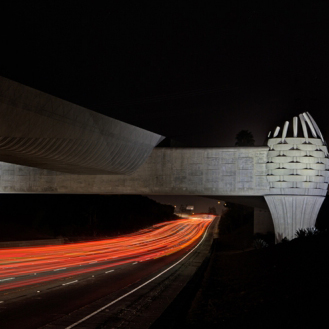
photo © Metro Gold Line Foothill Extension Construction Authority
Gold Line BridgeArcadia, CA, 2012 The recently completed Gold Line Bridge over I-210 is the first part of the Foothill Extension to be completed. The Construction Authority brought in the artist early to lead the design process before the design-build team was selected, a first for Los Angeles. Artist: Andrew Leicester Architect: AECom FENWAY CULTURAL DISTRICT Among the many cultural highlights of the Fenway District include the Gardner Museum, Symphony Hall, the Mary Baker Eddy Library, Museum of Fine Arts and Fenway Studios. It is the oldest continuously functioning building in the country constructed for and dedicated solely to artists’ space. Isabella Stewart Gardner Museum Extension Boston, MA 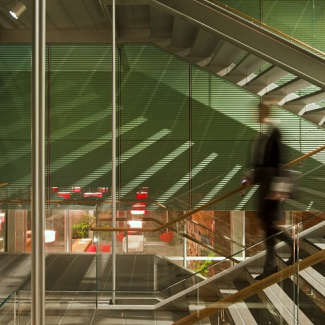
Photo © Nic Lehoux
Architect: Renzo Piano Studio Fenway Studios Boston, MA 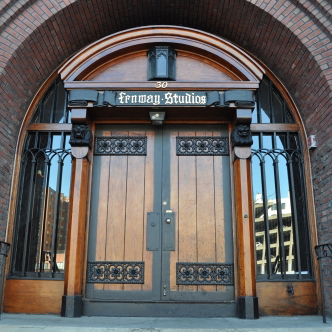
Photo © cultureNOW
UPCOMING EVENT: 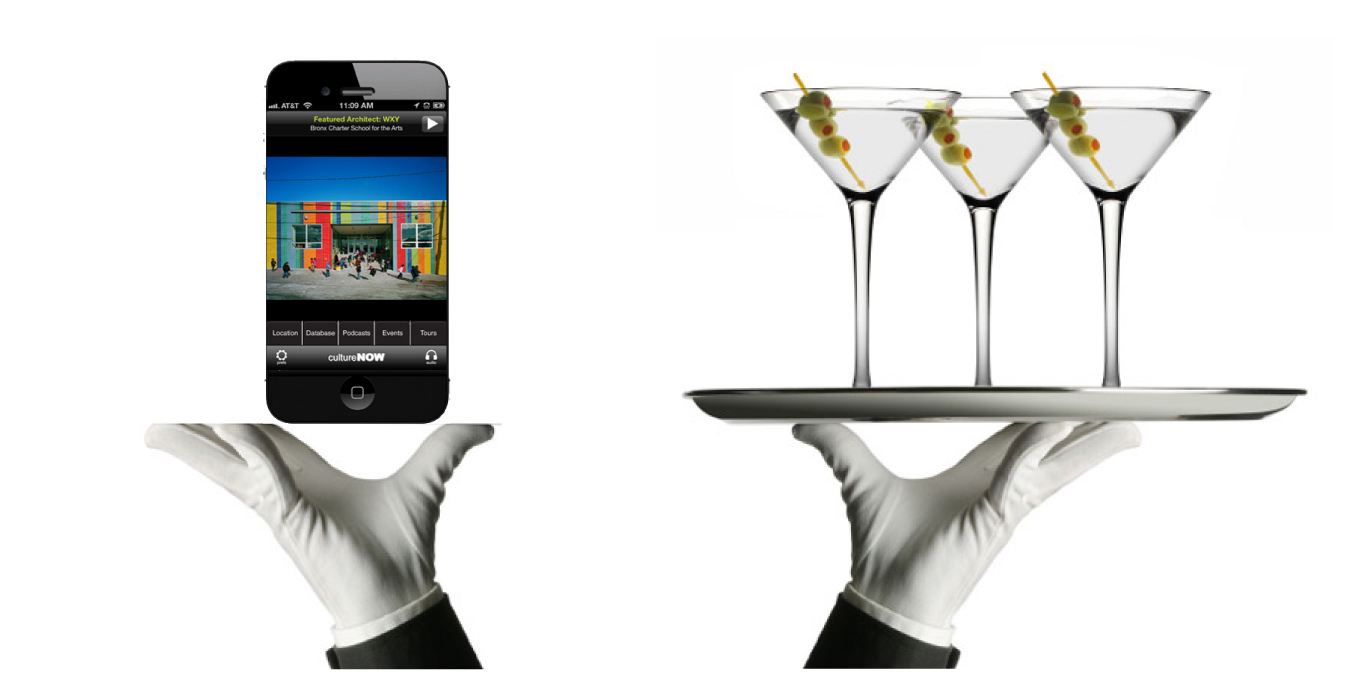
February 22nd, 2013 6:30pm - 8:30pm at the New York Center for Architecture Join us for our third evening of dialogs on design with custom cocktails. The Pairing: Claire Weisz, WXY Architects James Russell, Bloomberg Toby Cecchini, Bartender UPCOMING WALKING TOUR: Hell's Kitchen: The Political History of the New York Irish March 17, 2013 1pm - 4pm at St. Patrick's Cathedral James Kaplan, longtime member of the McManus Democratic Association, leads our annual walking tour of New York City's storied Hell's Kitchen neighborhood. INTERESTING FIND 
|
||
|
FEATURED ARTISTS: RALPH HELMICK & STUART SCHECHTER What drew us to the work of Ralph Helmick and Stuart Schechter is the architectural quality of their sculptures and the successful way that they have managed to integrate them into the surrounding buildings. Due to the nature of construction timelines, the typical public art commissioning schedule forces the artwork to occur long after the design team has been working together on the project. Consequently, no matter what the best intentions are, the artwork tends to get treated as an afterthought, more like decoration for lobbies and atriums than an integral component of the design. There are not many artists who can work within the system, elevate the process and create pieces that actually create a dialog with their settings in a meaningful way. Take for example Perspective which is really the laser cut silhouette of the Dallas skyline integrated into the dome of the Dallas Police Station, a simple concept that suggests protection and rising above the city. Or Genius which is a mobile of letters and numbers shaped like an owl perhaps to indicate flight that hangs at the Leon Goldstein High School for the Sciences in Queens, NY. |
||||
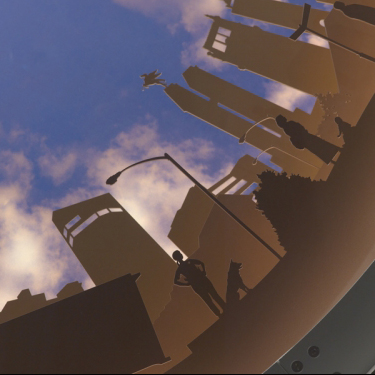
Perpective R. Helmick (2008) Dallas, TX
Photo Courtesy of the Artist |
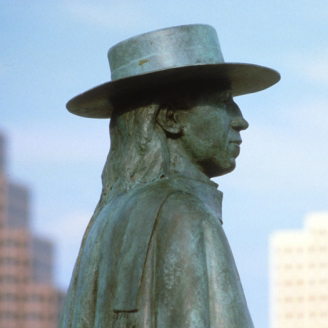
Stevie Ray Vauhn Memorial R. Helmick (1994) Austin, TX
Photo Courtesy of the Artist |
|||
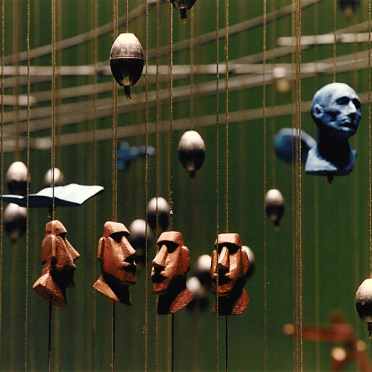
Ghostwriter R. Helmick / S. Schecter (1994) Evanston, IL
Photo courtesy of the Artist |
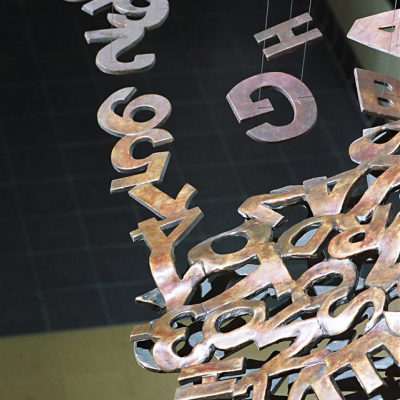
Genius R. Helmick / S. Schecter (2002) New York, NY
Photo courtesy of the Artist |
|||
|
FEATURED ARCHITECT: ANN BEHA It is really a difficult challenge to carefully and intelligently preserve historic cultural buildings in a way that maintains their original architectural character while updating and adding to them in an elegant and sensitive way. Ann Beha is one of the most thoughtful architects who comes to mind. She has had the rare opportunity to work on practically every major building in the Fenway which, over the course of her career, has allowed her to transform the neighborhood. She has completed many traditional cultural buildings from university buildings to museums and libraries throughout Boston and the United States. And, in 2007, she collaborated with Cambridge Seven Associates in the renovation of the former Liberty Jail into a popular boutique hotel where guests can actually stay in the former cells. |
||||
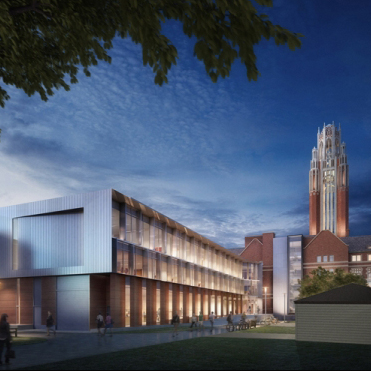
University of Chicago Dept. of Economics (2011) Chicago, IL
Rendering © DBox Studio |

Mary Baker Eddy Library (2002) Boston, MA
Photo © ESTO Photography Jonathan Hilyar |
|||
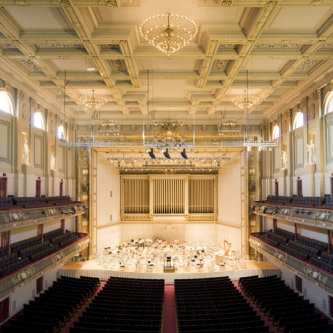
Symphony Hall (2002) Boston, MA
Photo © Peter Vanderwarker |
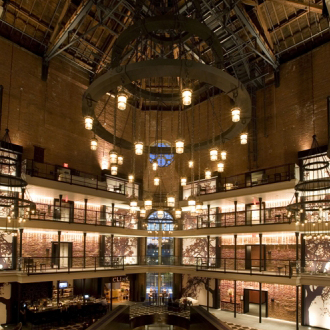
Liberty Hotel (2007) Boston, MA
Photo © Peter Vanderwarker |
|||
|
CITYSCAPES OF BOSTON Author Bob Campbell asks: "In a time-layered city like Boston the past really does show through the present, creating most of the city's visual richness. Yet a doubt remains. Can we ever really know the past? Aren't these paired pictures terribly misleading?" In order to create the Cityscapes of Boston series, photographer Peter Vanderwarker sifted through old photographs at the Boston Public Library and attempted to recreate the scenes from the same vantage point as the historic photos. It was a Herculean effort. As the city shifted, he had to stand in new buildings where there were none before, but the result is a very powerful look at the transformation of a city over time. |
||||
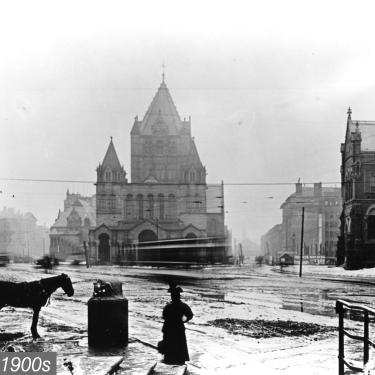
Copley Square, early 1900's, Boston, MA
Photo courtesy Boston Public Lbrary |
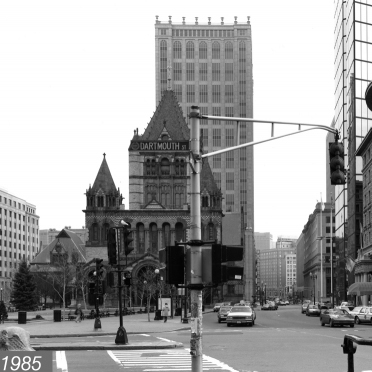
Copley Square, 1985, Boston, MA
Photo © Peter Vanderwaker |
|||

